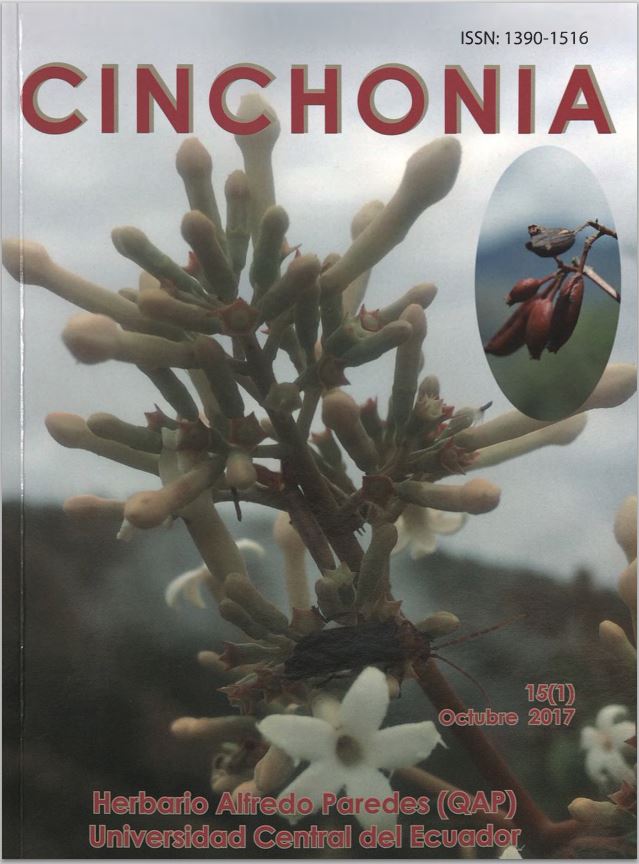Conocimiento y uso de plantas en tres comunidades Kichwas: Yana Yaku, Loro Cachi y Nina Amarun, Pastaza - Ecuador
Main Article Content
Abstract
Ethnobotanical research was carried out in the Kichwa communities: Yana Yacu, Loro Cachi and Nina Amarun from the province of Pastaza, during August and September 2005, corresponding to the plant formations: Evergreen lowland forest, Evergreen lowland forest flooded by White and Black Waters and Lowland Palms Flooded Forest, Living Area Tropical Humid Forest; And an altitude between 120 and 250 m. Fieldwork was carried out using several botanical methodologies: transects (0.02 Ha), permanent plots (1 Ha) and random collections, ethnobotanical information was provided by at least two members of each Kichwa community. In all the samples, collections for herbarium were carried out, the same ones that assembled, labeled and taxonomically identified, are deposited in the Alfredo Paredes Herbarium (QAP) of the Central University of Ecuador. There were 393 species, 4 corresponding to the Fungi Kingdom and 389 to the Vegetable Kingdom, the great majority corresponding to the Magnoliophyta Division (353), Liliopsida (33), Polypodiaceae (2), Bryophyta (1). The Kichwa names mostly have a binomial nomenclature, followed by trinomial and monomial. Fuel uses, animal food and construction are the most important. The most commonly used whorls are stems and fruits, these results reveal the knowledge related to construction and fuel activities, while the fruit whorl constitutes the basis of human and animal food, demonstrating once again Kichwa knowledge about plants and their environment, to stay in harmony with nature.

